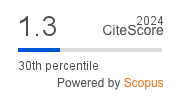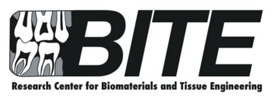Dental caries risk factors in West Jakarta Primary students: A cross-sectional study
Downloads
Background: The majority of children in Indonesia, particularly in Jakarta, continue to experience numerous dental and oral health issues, with dental caries being especially prevalent. Caries is a multifactorial disease that, in children, can be caused by personal habits or external influences. Purpose: This study aimed to determine the relationship between caries risk factors and the occurrence of caries in primary school children in West Jakarta, Indonesia. Methods: The study was conducted in three public primary schools in West Jakarta in November 2023. Oral examinations and questionnaires were completed by all students from fourth to sixth grade, with a total sample size of 421 students. In this study, caries was the dependent variable, and the independent variables included sociodemographic factors, oral health behaviors, smoking habits, and dietary habits. Data analysis involved bivariate analysis and the application of a multivariate prediction model using logistic regression. Results: The variables significantly associated with dental caries were never visiting the dentist (p < 0.05), brushing teeth never or only several times a week (p < 0.05), never consuming fruits (p < 0.05), and consuming biscuits several times a day (p < 0.05). However, other variables—such as parental education, use of oral cleaning tools and fluoride toothpaste, smoking habits, and consumption of certain sweet foods and beverages—did not show a significant association. Conclusion: The most substantial factors contributing to dental caries were infrequent toothbrushing and frequent consumption of biscuits. Interestingly, children who never visited the dentist had lower incidences of caries.
Downloads
Liana I, Fahmi. Analysis of parents’ social economic status towards caries status in children. DHeJA Dent Heal J Aceh. 2022; 1(1): 27–39. doi: https://doi.org/10.30867/dheja.v1i1.56
Bramantoro T, Setijanto RD, Palupi R, Aghazy AZ, Irmalia WR. Dental caries and associated factors among primary school children in metropolitan city with the largest javanese race population: A cross-sectional study. Contemp Clin Dent. 2019; 10(2): 274–83. doi: https://doi.org/10.4103/ccd.ccd_517_18
Badan Penelitian dan Pengembangan Kesehatan. Laporan Nasional Hasil Riset Kesehatan Dasar (Riskesdas) 2018. Jakarta: Kementerian Kesehatan Republik Indonesia; 2018. p. 166. web: https://repository.badankebijakan.kemkes.go.id/id/eprint/3514/
Asriawal A, Angky J. Hubungan frekuensi minum soft drink (bersoda) terhadap pH saliva dan sngka DMF-T pada mahasiswa D-IV jurusan keperawatan gigi. Media Kesehat Gigi Politek Kesehat Makassar. 2019; 18(2): 22–31. doi: https://doi.org/10.32382/mkg.v18i2.1293
Dianawati N, Setyarini W, Widjiastuti I, Ridwan RD, Kuntaman K. The distribution of Streptococcus mutans and Streptococcus sobrinus in children with dental caries severity level. Dent J. 2020; 53(1): 36–9. doi: https://doi.org/10.20473/j.djmkg.v53.i1.p36-39
Setijanto D, Bramantoro T, Anggraini ND, Maharani AD, Angesti D, Hidayat DS, Ramadhani A. The correlation analysis of dental caries, general health conditions and daily performance in children aged 2-5 years old. Dent J. 2020; 53(3): 122–5. doi: https://doi.org/10.20473/j.djmkg.v53.i3.p122-125
Butera A, Maiorani C, Morandini A, Simonini M, Morittu S, Trombini J, Scribante A. Evaluation of children caries risk factors: a narrative review of nutritional aspects, oral hygiene habits, and bacterial alterations. Children. 2022; 9(2): 262. doi: https://doi.org/10.3390/children9020262
Shitie A, Addis R, Tilahun A, Negash W. Prevalence of dental caries and its associated factors among primary school children in Ethiopia. Int J Dent. 2021; 2021: 1–7. doi: https://doi.org/10.1155/2021/6637196
Nuraini P, Kriswandini IL, Ridwan RD, Soetjipto. Sucrose, lactose, and xylitol exposures affect biofilm formation of Streptococcus mutans. Pesqui Bras Odontopediatria Clin Integr. 2021; 21: e0257. doi: https://doi.org/10.1590/pboci.2021.107
Wilson B, Mallikarjuna SB, Narsimha V V, Muddaiah S, Suresh LR. Dental caries and co-relation with sugar intake in 12-year-old school children Coorg, India. Open Access J Public Heal. 2018; 2(2): 012. web: https://scientonline.org/open-access/dental-caries-and-co-relation-with-sugar-intake-in-12-year-old-school-children-coorg-india.pdf
Shyam R, Manjunath B, Kumar A, Narang R, Ghanghas M. Relationship of sociodemographic factors on dental caries experience among 11–14-year-old schoolchildren in India. Indian J Dent Res. 2019; 30(6): 948–53. doi: https://doi.org/10.4103/ijdr.IJDR_380_17
Nembhwani H V, Varkey I. Caries experience and its relationship with mother’s educational level and occupational status: a cross-sectional survey. Int J Clin Pediatr Dent. 2022; 15(S2): S226–9. doi: https://doi.org/10.5005/jp-journals-10005-2163
Mallineni SK, Alassaf A, Almulhim B, Alghamdi S. Influence of tooth brushing and previous dental visits on dental caries status among Saudi Arabian children. Children. 2023; 10(3): 471. doi: https://doi.org/10.3390/children10030471
Cui Z, Wang W, Si Y, Wang X, Feng X, Tai B, Hu D, Lin H, Wang B, Wang C, Zheng S, Liu X, Rong W, Wang W. Tooth brushing with fluoridated toothpaste and associated factors among Chinese adolescents: a nationwide cross-sectional study. BMC Oral Health. 2023; 23(1): 765. doi: https://doi.org/10.1186/s12903-023-03506-w
Maharani DA, Zhang S, Gao SS, Chu C-H, Rahardjo A. Dental caries and the erosive tooth wear status of 12-year-old children in Jakarta, Indonesia. Int J Environ Res Public Health. 2019; 16(16): 2994. doi: https://doi.org/10.3390/ijerph16162994
John A, Abraham G, Alias A. Two-visit CAD/CAM milled dentures in the rehabilitation of edentulous arches: A case series. J Indian Prosthodont Soc. 2019; 19(1): 88–92. doi: https://doi.org/10.4103/jips.jips_252_18
Gorgi Z, Abbasi A, Mohsenzadeh A, Damankeshan A, Sheikh Fathollahi M. A survey on DMFT index of the first permanent molar in 12-year-old students of Larestan, Iran, in 2014. J Occup Heal Epidemiol. 2017; 6(1): 32–9. doi: https://doi.org/10.18869/acadpub.johe.6.1.32
Dumitrescu R, Sava-Rosianu R, Jumanca D, Balean O, Damian L-R, Fratila AD, Maricutoiu L, Hajdu AI, Focht R, Dumitrache MA, Daguci C, Postolache M, Vernic C, Galuscan A. The impact of parental education on schoolchildren’s oral health—a multicenter cross-sectional study in Romania. Int J Environ Res Public Health. 2022; 19(17): 11102. doi: https://doi.org/10.3390/ijerph191711102
Duijster D, de Jong‐Lenters M, de Ruiter C, Thijssen J, van Loveren C, Verrips E. Parental and family-related influences on dental caries in children of Dutch, Moroccan and Turkish origin. Community Dent Oral Epidemiol. 2015; 43(2): 152–62. doi: https://doi.org/10.1111/cdoe.12134
Lueangpiansamut J, Chatrchaiwiwatana S, Muktabhant B, Inthalohit W. Relationship between dental caries status, nutritional status, snack foods, and sugar-sweetened beverages consumption among primary schoolchildren grade 4-6 in Nongbua Khamsaen school, Na Klang district, Nongbua Lampoo Province, Thailand. J Med Assoc Thai. 2012; 95(8): 1090–7. pubmed: http://www.ncbi.nlm.nih.gov/pubmed/23061315
Chouchene F, Masmoudi F, Baaziz A, Maatouk F, Ghedira H. Early childhood caries prevalence and associated risk factors in Monastir, Tunisia: a cross-sectional study. Front Public Heal. 2022; 10: 821128. doi: https://doi.org/10.3389/fpubh.2022.821128
Adugna A, Abebe GF, Girma D, Alie MS. Dental caries and associated factors among preschool children in Southwest Ethiopia: a cross-sectional study. BMJ Paediatr Open. 2024; 8(1): e002319. doi: https://doi.org/10.1136/bmjpo-2023-002319
Bajgora V, Begzati A, Thaçi L. Connectivity between frequency of toothbrushing and dental caries. Int J Biomed. 2022; 12(4): 617–21. doi: https://doi.org/10.21103/Article12(4)_OA17
Mahajan P, Bhat D, Sharma D, Kaur S, Malik K. Dental caries in relation to brushing frequency, type of toothpaste used and sweets consumption frequency among 5 & 12 year old children: an epidemiological study. Int J Dent Med Sci Res. 2021; 3(5): 149–54. doi: https://doi.org/10.35629/5252-0305149154
Dawani N, Nisar N, Khan N, Syed S, Tanweer N. Prevalence and factors related to dental caries among pre-school children of Saddar town, Karachi, Pakistan: a cross-sectional study. BMC Oral Health. 2012; 12(1): 59. doi: https://doi.org/10.1186/1472-6831-12-59
Ferreira Zandoná AG, Ritter A V, Eidson RS. Dental caries: etiology, clinical characteristics, risk assessment, and management. In: Ritter A V., Boushell LW, Walter R, editors. Sturdevant’s art and science of operative dentistry. 7th ed. Mosby Elsevier; 2019. p. 40–94. doi: https://doi.org/10.1016/B978-0-323-47833-5.00002-2
Sim S-J, Moon J-Y, Shin H-S. Association between diet quality and untreated dental caries: results from the Korea National Health and Nutrition Examination Survey. Nutr Res Pract. 2023; 17(5): 959. doi: https://doi.org/10.4162/nrp.2023.17.5.959
Kaye EA, Sohn W, Garcia RI. The Healthy Eating Index and coronal dental caries in US adults. J Am Dent Assoc. 2020; 151(2): 78–86. doi: https://doi.org/10.1016/j.adaj.2019.09.009
Pérez-Portilla T, Ortíz-Benitez DL, Lucas-Rincón SE, Canseco-Prado G, Delgado-Pérez VJ, Scougall-Vilchis RJ, Robles-Bermeo NL, Alonso-Sánchez CC, Veras-Hernández MA, Medina-Solís CE. The importance of toothbrushing and oral hygiene in maintaining oral health. Preimpresiones. 2023; 1: 1–10. doi: https://doi.org/10.20944/preprints202309.0596.v1
Sudan S, Ravishankar T., Tirth A, Tafadar MDN. Does tooth brushing prevent dental caries among children? A systematic review and meta-analysis. J Indian Assoc Public Heal Dent. 2023; 21(3): 210–6. doi: https://doi.org/10.4103/jiaphd.jiaphd_238_22
Elidrissi SM, Naidoo S. Prevalence of dental caries and toothbrushing habits among preschool children in Khartoum State, Sudan. Int Dent J. 2016; 66(4): 215–20. doi: https://doi.org/10.1111/idj.12223
Ramesh S, Sundari S. Dental caries and oral hygiene practices among school children in Chennai, India: a cross sectional study. Int J Contemp Pediatr. 2019; 6(5): 2032. doi: https://doi.org/10.18203/2349-3291.ijcp20193719
Mulu W, Demilie T, Yimer M, Meshesha K, Abera B. Dental caries and associated factors among primary school children in Bahir Dar city: a cross-sectional study. BMC Res Notes. 2014; 7(1): 949. doi: https://doi.org/10.1186/1756-0500-7-949
Tran TT, Hoang TN-A, Hoang DT, Luu NH. Caries status and risk factors among urban and rural primary students in Thua Thien Hue Province, Vietnam. J Glob Heal Sci. 2020; 2(2): 1–12. doi: https://doi.org/10.35500/jghs.2020.2.e27
Asmawati A, Rasak A. Hubungan status kesehatan gingiva terhadap penggunaan tusuk gigi. War Farm. 2019; 8(2): 99–105. doi: https://doi.org/10.46356/wfarmasi.v8i2.127
Keumala CR, Mardelita S. Community knowledge about the use of toothpicks on gingiva status in Lamteh Village Banda Aceh. JDHT J Dent Hyg Ther. 2022; 3(2): 101–4. doi: https://doi.org/10.36082/jdht.v3i2.750
Parisotto TM, Steiner-Oliveira C, Duque C, Peres RCR, Rodrigues LKA, Nobre-dos-Santos M. Relationship among microbiological composition and presence of dental plaque, sugar exposure, social factors and different stages of early childhood caries. Arch Oral Biol. 2010; 55(5): 365–73. doi: https://doi.org/10.1016/j.archoralbio.2010.03.005
Bassa S, Workie SB, Kassa Y, Tegbaru DW. Prevalence of dental caries and relation with nutritional status among school-age children in resource limited setting of southern Ethiopia. BMC Oral Health. 2023; 23(1): 84. doi: https://doi.org/10.1186/s12903-023-02786-6
Rao A, Kumar N, P AN. Effect of different commercially available biscuits on salivary ph, flow rate and oral clearance rate among children. World J Dent. 2019; 10(1): 35–40. doi: https://doi.org/10.5005/jp-journals-10015-1599
Dewi CS, Primarti RS, Sasmita IS. The association of cariogenic foods consumption frequency on the occurrence of dental caries in children with autism spectrum disorders. Padjadjaran J Dent. 2023; 35(1): 34–9. doi: https://doi.org/10.24198/pjd.vol35no1.42892
Almasi A, Rahimiforoushani A, Eshraghian MR, Mohammad K, Pasdar Y, Tarrahi MJ, Moghimbeigi A, Ahmadi Jouybari T. Effect of nutritional habits on dental caries in permanent dentition among schoolchildren aged 10-12 years: a zero-inflated generalized poisson regression model approach. Iran J Public Health. 2016; 45(3): 353–61. pubmed: http://www.ncbi.nlm.nih.gov/pubmed/27141498
Mulyati R, Lilis Rohayani, Mia Santika Pratiwi. Hubungan konsumsi makanan kariogenik dengan kejadian karies gigi pada anak sekolah dasar: tinjauan literatur. J Ilm Keperawatan (Scientific J Nursing). 2022; 8(3): 22–33. doi: https://doi.org/10.33023/jikep.v8i3.1155
Özel IÇ. The relationship between dental caries, food intake and body composition in school-age children. Clin Nutr ESPEN. 2021; 46: S759. doi: https://doi.org/10.1016/j.clnesp.2021.09.610
Copyright (c) 2025 Dental Journal

This work is licensed under a Creative Commons Attribution-ShareAlike 4.0 International License.
- Every manuscript submitted to must observe the policy and terms set by the Dental Journal (Majalah Kedokteran Gigi).
- Publication rights to manuscript content published by the Dental Journal (Majalah Kedokteran Gigi) is owned by the journal with the consent and approval of the author(s) concerned.
- Full texts of electronically published manuscripts can be accessed free of charge and used according to the license shown below.
- The Dental Journal (Majalah Kedokteran Gigi) is licensed under a Creative Commons Attribution-ShareAlike 4.0 International License

















